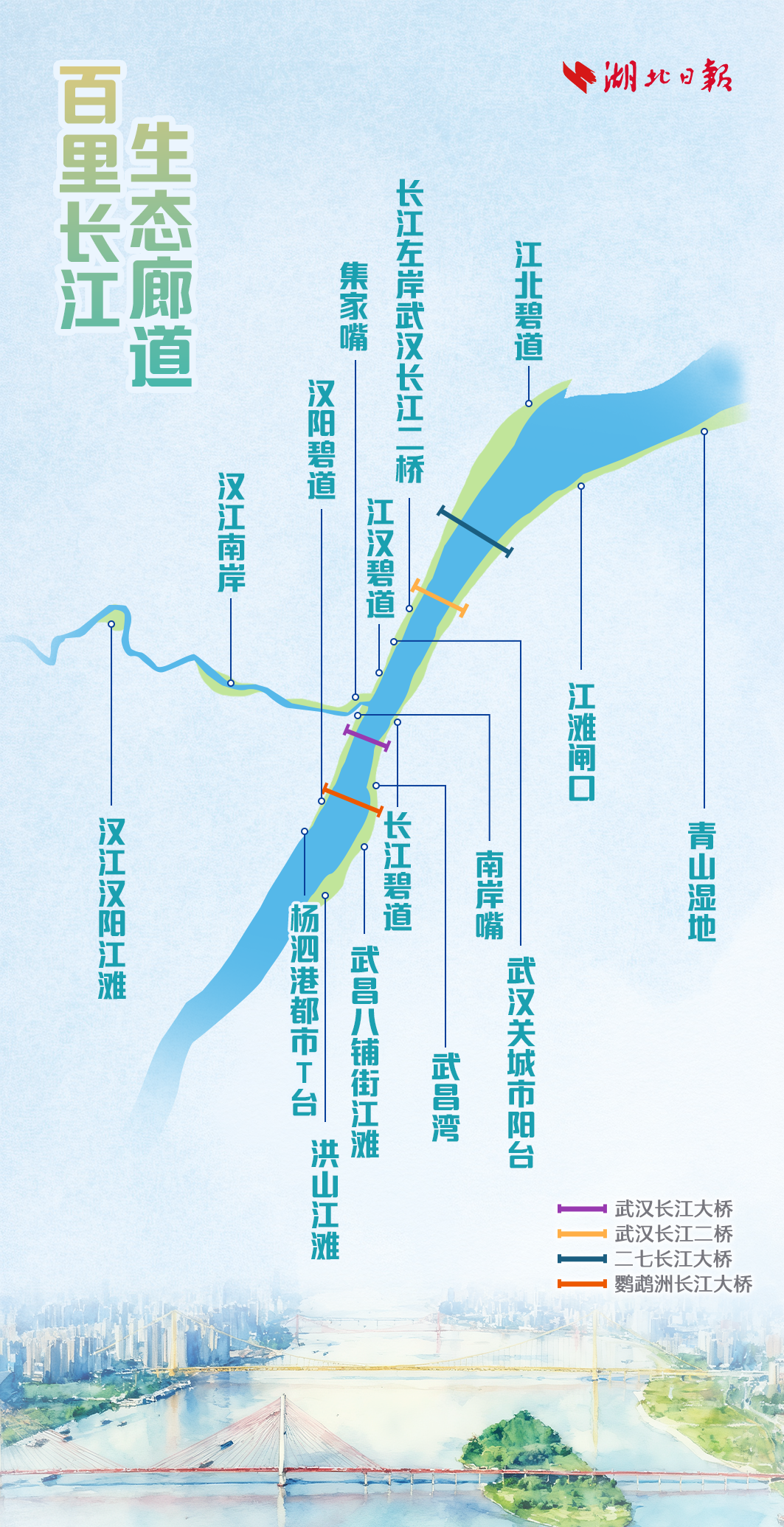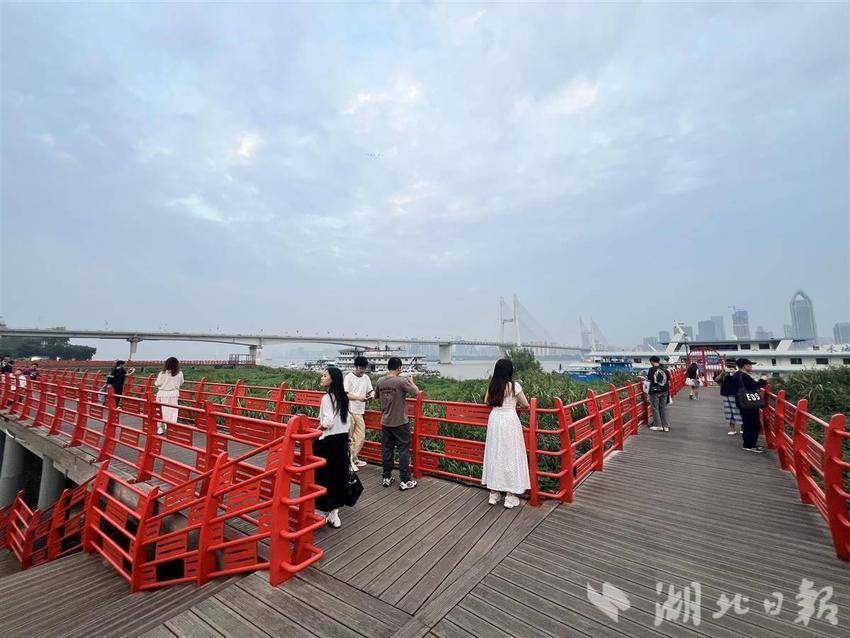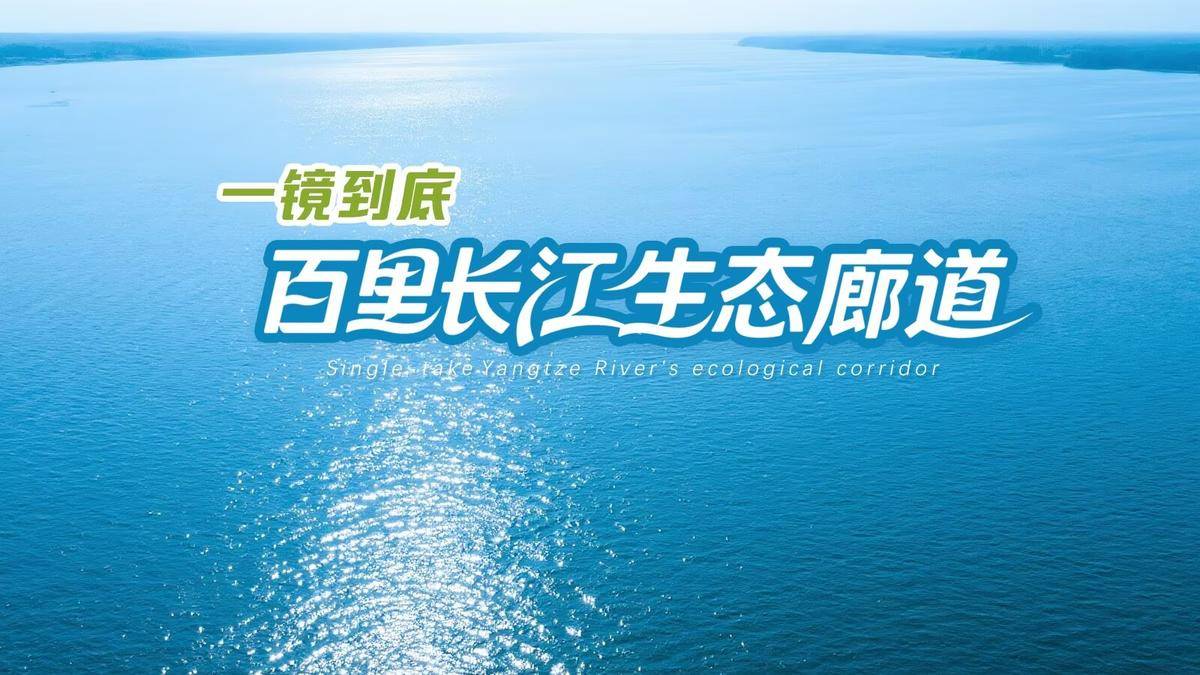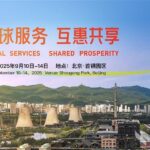On October 5th, the weather was clear and sunny, with bustling crowds throughout Wuhan. The Yellow Crane Tower was packed with visitors, Jianghan Road was shoulder-to-shoulder with people, and East Lake echoed with cheerful laughter.
If we zoom out from the bustling crowds, a grander picture unfolds along the two rivers and four shores—the Hundred-Mile Yangtze River Ecological Corridor has been fully connected, welcoming visitors in its complete form for the first time.
From an aerial view, this 82.89-kilometer ecological corridor stretches along the river like a century-long scroll. The tranquility of Nan’an Zui, the liveliness of Hankou River Beach, the vitality of Yangsigang, the historical richness of Wuchang Bay, the natural charm of Hongshan River Beach… During this Golden Week holiday, each section of the riverfront tells its own unique story to visitors.

“Enjoying the river breeze and scenery while tasting authentic Wuhan cuisine—this is the perfect place to relax!” exclaimed a visitor from Changsha on the evening of October 3rd at the Guanlu Boardwalk near Yongqing Gate of Hankou River Beach. Behind her, the Yangtze River Second Bridge and skyscrapers on the opposite shore were silhouetted against the sunset, with crowds of tourists enjoying the view.
This marks the starting point of Wuhan’s Hundred-Mile Yangtze River Ecological Corridor and where Wuhan residents’ “riverfront dream” began.
From the management of the Dragon King Temple danger zone after the 1998 catastrophic flood, to the opening of Hankou River Beach Phase I in 2002 that sparked a citywide trend of “going to the riverfront,” to the launch of the Wuhan Hundred-Mile Yangtze River Ecological Corridor project in 2020—Wuhan has spent nearly 30 years transforming from “flood control barriers” to a “world-class waterfront space.”
During this Golden Week, Hankou River Beach served as a welcoming “urban living room,” showcasing the perfect integration of waterfront space and urban functions through mature, convenient services and vibrant atmosphere. With art exhibitions, opera carnivals, and open-air cinemas, it warmly embraced every visitor, telling the story of Wuhan’s transition from “defending against the river” to “embracing the river.”

Moving downstream, the scene shifts from urban integration to the vibrant renewal of industrial heritage. Yangsigang River Beach in Hanyang, once a noisy old dock with roaring machinery, has transformed into a “urban catwalk” for sports and leisure. Under the massive gantry cranes, the sound of basketballs hitting the ground echoes powerfully. “Playing basketball with the river breeze—what a delight!” exclaimed a local resident during the National Day holiday, reuniting with old classmates and sweating it out as if back in their school days.
What was once a somewhat desolate industrial site just a few years ago has now transformed into an artistic sports paradise. Under the golden Yangsigang Bridge, visitors marvel at the “curtain of rain” spectacle; at the foot of the bridge, the Zhiyin Culture Market fills the old industrial area with new life, blending coffee aromas with the river breeze.
As the landscape continues, Hongshan River Beach and Qingshan River Beach intentionally preserve elements of natural wilderness and authenticity in this long scroll.
As part of the central urban area’s riverfront development, Hongshan River Beach doesn’t pursue refined elegance but instead preserves farmland enclosed by carbonized wood fences and tranquil spaces with autumn-reflecting metasequoia trees, offering urban residents a rare glimpse of rural memories.
“Here, you can both witness the mighty river and find pastoral tranquility,” noted a local citizen, highlighting the area’s unique value. Together with the connected Qingshan River Beach, they form a complete slow-traffic corridor, allowing residents to experience the Yangtze River from different perspectives. Whether it’s the Reed Sea Boardwalk at Hongshan River Beach or Qingshan River Beach’s renowned “sponge city” ecological concept, they enrich the corridor’s ecological diversity, showcasing Wuhan’s unadorned openness and ease within its “river-lake character.”
Where the landscape reaches its misty water-ink wash, the brush






